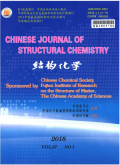Addition Mechanisms of Phenol toward Formaldehyde under Acidic Condition: a Theoretical Investigation
基本信息来源于合作网站,原文需代理用户跳转至来源网站获取
摘要:
The reaction mechanisms of phenol with formaldehyde in the first and second addition at the ortho- and para-position in acid solution were theoretically investigated at the PW91/DNP level with solvent effects included. The reaction of phenol with protonated methanediol firstly forms an adduct intermediate, via a SN2 mechanism with a water molecule as the leaving group. From the adduct intermediate, there are two reaction channels involving a proton transfer to form the addition products. One is that a proton directly transfers via a four-membered ring transition state with a notable energy barrier (Four-member mechanism). Another mechanism involving a water molecule as catalyst to mediate the proton transfer (WCP mechanism), is a barrierless process, indicating that the formation of the adduct intermediate, the first reaction step, is rate-limiting. The reaction products are free hydroxymethyl phenols and/or hydroxybenzy carbocation (HOC6H4CH2+) which plays an important role in the following formation of methylene and methylene ether linkages. The second addition reactions between formaldehyde and hydroxymethyl phenol at all possible reaction sites of the phenol ring in acid solution were also investigated and discussed.

推荐文章
An EXAFS investigation of the mechanism of competitive sorption between Co(Ⅱ) and Ni(Ⅱ) at γ-alumi
Co(Ⅱ)
Ni(Ⅱ)
γ-Al2O3
Competitive sorption
EXAFS
Basic formation mechanisms of Lake Doroninskoye soda water, East Siberia, Russia
Saline lake
Sulfate reduction
Thermodynamic equilibrium
Zinc isotope fractionation under vaporization processes and in aqueous solutions
Evaporation process
Zinc isotope
Kinetic isotope fractionation
Equilibrium fractionation
Zinc species in solution
First-principles investigation of the concentration effect on equilibrium fractionation of Ca isotop
Ca isotope
First-principles calculations
Forsterite
Concentration effect
Equilibrium isotope fractionation
内容分析
关键词云
关键词热度
相关文献总数
(/次)
(/年)
引文网络
引文网络
二级参考文献 (0)
共引文献 (0)
参考文献 (8)
节点文献
引证文献 (0)
同被引文献 (0)
二级引证文献 (0)
1962(1)
- 参考文献(1)
- 二级参考文献(0)
1969(1)
- 参考文献(1)
- 二级参考文献(0)
1992(1)
- 参考文献(1)
- 二级参考文献(0)
1993(1)
- 参考文献(1)
- 二级参考文献(0)
1994(1)
- 参考文献(1)
- 二级参考文献(0)
1996(1)
- 参考文献(1)
- 二级参考文献(0)
1998(1)
- 参考文献(1)
- 二级参考文献(0)
2003(1)
- 参考文献(1)
- 二级参考文献(0)
2012(0)
- 参考文献(0)
- 二级参考文献(0)
- 引证文献(0)
- 二级引证文献(0)
研究主题发展历程
节点文献
反应机制
苯酚甲醛
酸性条件
质子转移
酸性溶液
加合物
水分子
溶剂效应
研究起点
研究来源
研究分支
研究去脉
引文网络交叉学科
相关学者/机构
期刊影响力
结构化学
主办单位:
中国化学会
中国科学院福建物质结构研究所
出版周期:
月刊
ISSN:
0254-5861
CN:
35-1112/TQ
开本:
出版地:
福建省福州市杨桥西路155号
邮发代号:
创刊时间:
语种:
eng
出版文献量(篇)
5114
总下载数(次)
0
总被引数(次)
8477
期刊文献
相关文献
推荐文献
- 期刊分类
- 期刊(年)
- 期刊(期)
- 期刊推荐
力学
化学
地球物理学
地质学
基础科学综合
大学学报
天文学
天文学、地球科学
数学
气象学
海洋学
物理学
生物学
生物科学
自然地理学和测绘学
自然科学总论
自然科学理论与方法
资源科学
非线性科学与系统科学
结构化学2022
结构化学2021
结构化学2020
结构化学2019
结构化学2018
结构化学2017
结构化学2016
结构化学2015
结构化学2014
结构化学2013
结构化学2012
结构化学2011
结构化学2010
结构化学2009
结构化学2008
结构化学2007
结构化学2006
结构化学2005
结构化学2004
结构化学2003
结构化学2002
结构化学2001
结构化学2000
结构化学1999
结构化学2012年第9期
结构化学2012年第8期
结构化学2012年第7期
结构化学2012年第6期
结构化学2012年第5期
结构化学2012年第4期
结构化学2012年第3期
结构化学2012年第2期
结构化学2012年第12期
结构化学2012年第11期
结构化学2012年第10期
结构化学2012年第1期

 免费查重
免费查重










